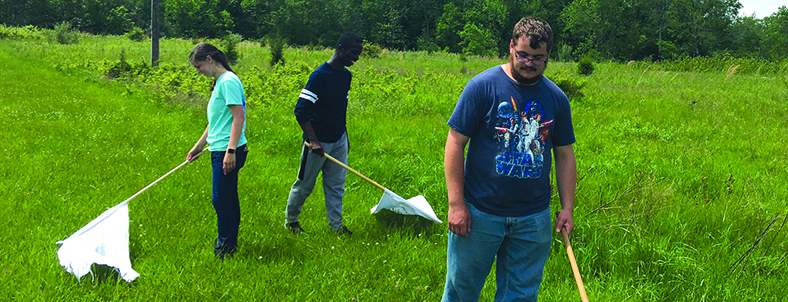Stress Tolerance
OSC data processing helps Benoit's group survey tick populations
While most of us try to distance ourselves from biting, blood-sucking creatures, Josh Benoit, Ph.D. and his research group at the University of Cincinnati spend their days getting to know them very well – down to the genes and genomics. The idea is the more we understand ticks and other blood feeding arthropods, the better we can avoid and eliminate them. Through the Ohio Supercomputer Center’s high-speed computing power, Benoit’s group is learning about the biology of pests like ticks through next-generation sequencing.
The group is taking a deep look into how ticks survive stressful conditions, such as the cold winter months or heat and dehydration during the summer. The group has found one reason might be their ability to control genes involved in detoxification and those regulating the accumulation of specific metabolites that decrease stress-induced damage.
“When we see them under stress, we see them upregulating a lot of genes involved in detoxification,” Benoit said. “So maybe it’s not the best time to try to spray pesticides on a dry day or a hot day because ticks already have these genes upregulated to detoxify pesticides and prevent damage from stress.”
Through some of the group’s initial sweeps of tick populations in Ohio, they estimate the 2017 population more than doubled from 2016. More ticks means a rise in tick-related diseases in humans and livestock. To better understand underlying aspects of tick behavior and physiology, the group used RNA sequencing to analyze gene expression differences. While ticks don’t have fewer actual genes than larger species like humans, there are fewer resources and fewer cells to draw from each individual.
“A human is big. You can get a lot of the same cells from one organism,” Benoit said. “Versus (ticks), you have process multiple ticks to get enough RNA or DNA. So you have to make sure they’re inbred in order to get enough material from what is equivalently the same genetic background.”
OSC’s resources provide the group with fast data processing and ease of access through OSC OnDemand, so Benoit’s students can view the same data they see in the lab at home.
“Everybody has a laptop, but the heavy processing is done on the cluster, so we would have had to have five or six more local servers built if we didn’t have access to OSC resources,” Benoit said. “Not only does it give us access to a lot more processing power and space, it saves us probably $20,000 to $30,000 by not having to build our own.”
Written by Audrey Carson
Project Lead: Joshua Benoit, Ph.D., University of Cincinnati
Research Title: RNA-SEQ Analysis of Tick
Funding Source: University of Cincinnati
Website: http://insectphysiology.uc.edu/
File Upload:
2017_OSC_Research_Report_Benoit.pdf
